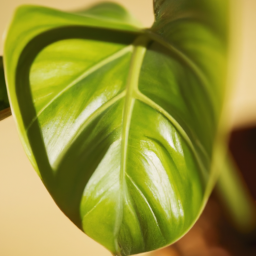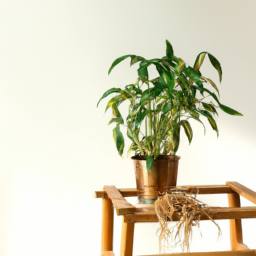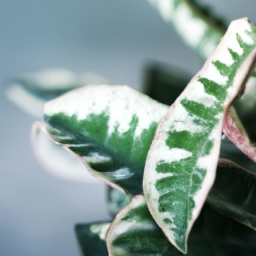
Are you looking for a natural and effective way to improve the air quality in your home or office? Look no further than indoor plants! Indoor plants have been proven to be excellent air purifiers, helping to remove harmful toxins and pollutants from the air we breathe. In this blog post, we will explore the top indoor plants to purify air, giving you a comprehensive guide on how to create a healthier and more refreshing environment indoors. So, if you’re ready to enhance the air quality in your space, keep reading to discover the power of indoor plants to purify air.
Benefits of Indoor Plants for Air Purification
Indoor plants not only enhance the aesthetic appeal of our homes and offices but also play a crucial role in purifying the air we breathe. With the increasing levels of air pollution, having indoor plants can be an effective way to improve the quality of the air indoors. In this article, we will explore the numerous benefits of indoor plants for air purification and how they can contribute to creating a healthier living environment.
1. Natural Air Filters
Indoor plants act as natural air filters by absorbing harmful pollutants and releasing clean oxygen. They have the ability to remove toxins such as formaldehyde, benzene, and trichloroethylene from the air, which are commonly found in household products and building materials. These pollutants can cause various health issues like respiratory problems, allergies, and even cancer. By having indoor plants, you can significantly reduce the concentration of these harmful substances in your living space.
Furthermore, plants also help to regulate humidity levels indoors. They release moisture through a process called transpiration, which can be beneficial in dry environments. This natural humidifying effect can alleviate dry skin, respiratory irritation, and even reduce the risk of infections. Indoor plants act as a natural air conditioning system, providing a comfortable and healthy atmosphere.
Moreover, studies have shown that indoor plants can reduce the levels of airborne dust particles. The leaves of plants capture dust, pollen, and other allergens, preventing them from circulating in the air. This is particularly beneficial for individuals with allergies or asthma, as it can minimize the triggers that worsen their symptoms.
2. Improved Air Quality
Indoor air quality can often be worse than outdoor air due to the accumulation of pollutants from various sources. However, indoor plants can significantly improve the air quality by absorbing these pollutants and releasing oxygen. NASA’s Clean Air Study found that certain plants are particularly effective in removing toxins from the air, making them excellent choices for indoor air purification.
One such plant is the Peace Lily (Spathiphyllum). It is known for its ability to remove formaldehyde, benzene, and other volatile organic compounds (VOCs) from the air. The Spider Plant (Chlorophytum comosum) is another popular choice, as it effectively removes carbon monoxide and xylene. Other plants like Aloe Vera, Snake Plant, and Boston Fern are also known for their air-purifying properties.
By strategically placing these plants in different areas of your home or office, you can create a healthier environment with improved air quality. It is recommended to have at least one plant per 100 square feet of living space for maximum air purification benefits.
3. Stress Reduction and Mental Well-being
Indoor plants not only purify the air but also have a positive impact on our mental well-being. Research has shown that being around plants can reduce stress levels and improve mood. The presence of indoor plants has a calming effect, promoting relaxation and creating a more serene atmosphere.
Plants also contribute to increased productivity and concentration. Studies have found that having plants in the workspace can enhance cognitive function and creativity. The visual appeal of plants and the connection with nature can stimulate the brain and improve overall mental clarity.
In addition, indoor plants can help in reducing background noise levels. The leaves and branches of plants absorb and diffract sound waves, acting as natural sound barriers. This can be particularly beneficial in noisy environments or areas close to busy streets.
Overall, incorporating indoor plants into your living or working space can have numerous benefits for air purification, improved air quality, and mental well-being. They not only enhance the visual appeal but also contribute to a healthier and more enjoyable environment. So why not bring some greenery indoors and experience the positive impact of plants firsthand?

Top Indoor Plants for Improving Air Quality
Welcome to our guide on the top indoor plants for improving air quality! If you are looking for natural and effective ways to purify the air in your home or office, adding indoor plants is a fantastic option. Not only do plants add beauty and vibrancy to any space, but they also act as natural air purifiers, removing harmful toxins and releasing fresh oxygen. In this article, we will explore some of the best indoor plants that can help improve the air you breathe.
1. Snake Plant (Sansevieria Trifasciata)
The Snake Plant, also known as Mother-in-Law’s Tongue, is a popular choice for indoor air purification. It is an excellent plant for beginners as it requires minimal care and can tolerate low light conditions. The Snake Plant is known for its ability to convert carbon dioxide into oxygen at night, making it an ideal plant for bedrooms.
In addition to its air-purifying properties, the Snake Plant also absorbs toxins such as formaldehyde, benzene, and xylene. These chemicals are commonly found in cleaning products, paints, and furniture. By having a Snake Plant in your home, you can create a healthier indoor environment.
To care for your Snake Plant, place it in well-draining soil and water it sparingly. It is important not to overwater the plant to avoid root rot. The Snake Plant can thrive in a wide range of temperatures, making it a versatile choice for any indoor space.
2. Peace Lily (Spathiphyllum)
The Peace Lily is not only a beautiful plant but also an excellent air purifier. It effectively removes harmful toxins such as formaldehyde, benzene, and trichloroethylene from the air. This plant thrives in low light conditions, making it perfect for areas with minimal sunlight.
One of the unique features of the Peace Lily is its ability to indicate when it needs water. Its leaves will droop slightly, signaling that it’s time to water the plant. This makes it a great choice for those who are new to plant care.
To ensure your Peace Lily thrives, keep the soil moist but not soggy. Avoid placing it in direct sunlight as it can scorch the leaves. With proper care, the Peace Lily will not only enhance the air quality in your space but also add a touch of elegance.
3. Spider Plant (Chlorophytum comosum)
The Spider Plant is a popular choice for indoor gardening due to its air-purifying abilities and easy maintenance. It effectively removes formaldehyde, carbon monoxide, and xylene from the air, making it a great addition to any indoor space.
This plant is known for its long, arching leaves that resemble spider legs, hence the name. It thrives in bright, indirect light and prefers well-draining soil. The Spider Plant is also known for its ability to reproduce quickly, producing small offshoots called “spiderettes” that can be potted and grown into new plants.
To keep your Spider Plant healthy, water it thoroughly and allow the soil to dry out between waterings. Avoid overwatering as it can lead to root rot. With its air-purifying qualities and unique appearance, the Spider Plant is a fantastic choice for both beginners and experienced plant enthusiasts.
Adding indoor plants to your home or office is an excellent way to improve air quality naturally. The Snake Plant, Peace Lily, and Spider Plant are just a few examples of plants that can effectively remove toxins and release fresh oxygen. By incorporating these plants into your indoor space, you can create a healthier and more vibrant environment for you and your loved ones.
Remember to choose plants that suit your space and lifestyle. Each plant has its own care requirements, so make sure to research and provide the necessary conditions for optimal growth. Happy planting!

Tips for Maintaining Indoor Plants that Purify the Air
Introduction
Welcome to our guide on maintaining indoor plants that purify the air. Indoor plants not only add beauty and a touch of nature to your living space but also have the incredible ability to filter and purify the air we breathe. In this article, we will provide you with expert tips on how to care for these plants to ensure they thrive and effectively improve the air quality in your home or office.
Choosing the Right Indoor Plants
When it comes to selecting indoor plants that purify the air, it’s important to consider a few factors. Firstly, you should choose plants that are known for their air-purifying properties. Some popular options include the Spider Plant, Peace Lily, Snake Plant, and Aloe Vera. These plants have been scientifically proven to remove harmful toxins from the air.
Additionally, you should consider the lighting conditions in your space. Different plants have different light requirements, so it’s essential to choose plants that will thrive in the available light. Some plants prefer bright, indirect light, while others can tolerate lower light conditions. Make sure to research the lighting needs of your chosen plants before bringing them home.
Lastly, consider the size of your space and the growth habits of the plants. Some indoor plants can grow quite large over time, while others remain compact. Ensure that the plants you select will fit well in your indoor environment and won’t outgrow the space.
Providing Adequate Watering
Watering is a crucial aspect of plant care, and it’s essential to provide your indoor plants with the right amount of water. Overwatering can lead to root rot and other issues, while underwatering can cause the plants to wither and dry out. Finding the balance is key.
Before watering your plants, always check the soil moisture. Stick your finger about an inch into the soil, and if it feels dry, it’s time to water. Use room temperature water and ensure that it reaches all parts of the soil. However, be cautious not to let the plants sit in standing water, as this can also lead to root problems.
Remember that different plants have different water requirements, so it’s important to research the specific needs of each plant. Some plants, like succulents, prefer drier conditions, while others, like ferns, require more moisture. By understanding the watering needs of your plants, you can help them thrive and maintain optimal air-purifying capabilities.
Providing Proper Lighting
Light is a vital factor for the growth and overall health of indoor plants. While each plant has different light requirements, most air-purifying plants thrive in bright, indirect light. Placing your plants near a window that receives filtered sunlight is often the best option.
If your space doesn’t receive sufficient natural light, you can supplement it with artificial lighting. LED grow lights are a popular choice for indoor plant enthusiasts as they provide the right spectrum of light for photosynthesis without generating excessive heat. Ensure that the light source is positioned at an appropriate distance from the plants to avoid burning the leaves.
Rotate your plants periodically to ensure even exposure to light and prevent them from leaning towards a particular direction. Remember that inadequate lighting can lead to weak growth and reduced air-purifying abilities, so it’s important to provide your plants with the light they need.
Regular Pruning and Cleaning
Pruning and cleaning your indoor plants are essential for their overall health and appearance. Regular pruning helps to remove dead or yellowing leaves, encourages new growth, and prevents the plants from becoming too leggy or overcrowded. Use clean and sharp pruning tools to make precise cuts and avoid damaging the plant.
Cleaning the leaves of your indoor plants not only enhances their aesthetic appeal but also improves their ability to purify the air. Dust and debris can accumulate on the leaves, blocking the pores and hindering photosynthesis. Gently wipe the leaves with a damp cloth or use a spray bottle to mist them regularly. This will keep the leaves clean and free from dust, allowing the plants to function optimally.
Additionally, remove any fallen leaves or debris from the soil surface to prevent the growth of mold or pests. Maintaining a clean and tidy environment around your plants will contribute to their overall well-being and air-purifying capabilities.
Conclusion
Caring for indoor plants that purify the air is a rewarding and beneficial endeavor. By choosing the right plants, providing adequate watering and lighting, and regularly pruning and cleaning, you can ensure that your indoor plants thrive and effectively improve the air quality in your living or working space. Remember to observe each plant’s specific needs and adjust your care routine accordingly. Happy gardening and breathing fresh, purified air!
Here’s what we learned
Are you looking for a natural and effective way to improve the air quality in your home? Look no further than indoor plants! Not only do they add a touch of greenery to your space, but they also have the incredible ability to purify the air we breathe. Indoor air pollution is a real concern, especially in urban areas, where we spend most of our time indoors. Thankfully, there are several types of indoor plants that can help eliminate harmful toxins and create a healthier living environment.
One of the most popular indoor plants known for its air-purifying properties is the snake plant, also known as Mother-in-Law’s Tongue. This hardy plant is a great choice for beginners as it requires minimal care and can survive in low light conditions. Snake plants are particularly effective at removing formaldehyde, a common indoor pollutant found in household products and furniture. Another fantastic option is the peace lily, which not only adds beauty to your space with its elegant white flowers but also helps combat toxins like benzene and trichloroethylene. This plant thrives in shady areas and requires regular watering to keep its soil moist.
These are just a few examples of indoor plants that can improve the air quality in your home. By incorporating these green companions into your living space, you can enjoy cleaner and fresher air while adding a touch of nature to your decor. So why not give it a try? Your lungs will thank you!
Here are the top questions that we were asked:
Q1: Which indoor plants are best for purifying the air?
A1: There are several indoor plants that are known for their air-purifying properties. Some popular options include the Snake Plant (Sansevieria), Peace Lily (Spathiphyllum), Spider Plant (Chlorophytum comosum), Aloe Vera, and English Ivy (Hedera helix). These plants are effective at removing toxins such as formaldehyde, benzene, and xylene from the air, making them excellent choices for improving indoor air quality.
Q2: How do indoor plants purify the air?
A2: Indoor plants purify the air through a process called phytoremediation. They absorb harmful pollutants from the air through their leaves and roots, and then convert them into harmless substances. This natural process helps to improve air quality by reducing the levels of toxins and chemicals present in the indoor environment.
Q3: Do indoor plants require special care to maintain their air-purifying properties?
A3: While indoor plants do require some care to maintain their air-purifying properties, it is generally not too demanding. Most air-purifying plants thrive in moderate to bright indirect light and prefer to be watered when the top inch of soil feels dry. Regular dusting of their leaves helps them to function optimally. Additionally, it’s important to avoid overwatering or placing them in drafty areas. By providing the right conditions, these plants will continue to purify the air effectively.
Q4: Can indoor plants help reduce allergies and respiratory issues?
A4: Yes, indoor plants can help reduce allergies and respiratory issues to some extent. Certain plants, like the Peace Lily and Boston Fern, have been found to improve indoor air quality by reducing airborne allergens and pollutants. They can also increase humidity levels, which may benefit individuals suffering from dryness or irritation in the respiratory system. However, it’s important to note that while plants can provide some relief, they are not a substitute for medical treatment or professional advice.
Q5: How many indoor plants do I need to effectively purify the air in my home?
A5: The number of indoor plants needed to effectively purify the air in your home depends on various factors such as the size of the space, the types of plants chosen, and the level of air pollution. As a general guideline, it is recommended to have at least one air-purifying plant per 100 square feet of living space. However, having multiple plants in different rooms can further enhance the air-purifying benefits. It’s always a good idea to consult with a local plant expert or nursery for personalized recommendations based on your specific needs.

James Wong is a renowned ethnobotanist, plant scientist, and local television presenter. With a passion for demystifying plant science, he is known for translating complex botanical concepts into practical advice for everyday plant enthusiasts. James’s expertise spans from traditional gardening to cutting-edge plant technologies, making his insights accessible and informative.


